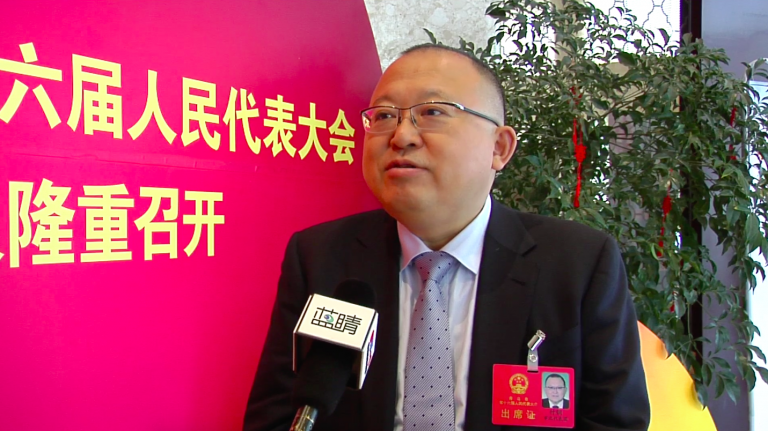From January 10th, Qingdao officially entered the annual "two sessions time". Delegates and members focus on health, education, transportation, urban construction and other areas of people's livelihood and economic concerns, and participate in politics.
The year 2020 is an extraordinary year, but it is difficult, more courageous. The spread of the epidemic has caused the value of life and health to be re-examined. The GDP ratio and growth rate of the health industry have increased against the trend, and for Qingdao, the health industry has become a new growth pole for the high-quality development of the city's economy.

In this context, how to make the innovation achievements of health industry at home and abroad gather in Qingdao, realize the development goal of building a 100 billion city of health industry as soon as possible, and let more health achievements benefit Qingdao people? Based on the in-depth research on the development trend of Qingdao health industry, Fu Gang, the representative of Qingdao Municipal People's Congress and the chairman of Baheal Pharmaceutical Group, brought "Suggestions on the Development Plan of Qingdao Health Industry".
The following is the "Suggestions"
The spread of the epidemic has brought a heavy blow to the global economic development, which needs to re-examine the value of life and health. The improvement of the health financial environment and industrial environment at home and abroad has made the GDP share and growth rate of health industry grow against the trend. From the perspective of domestic and international industrial trends, three major development opportunities have arisen.
First, "Health China 2030" has been elevated to a national strategy. Health China strategy has been integrated into all policies, and the health industry has gradually become a new engine to promote social and economic development. With the signing of "One Belt, One Road", RCEP and other cooperation and the successful holding of the SCO Summit, the pace of cooperation between China and the international community has been accelerated, which also accelerates the realization of the strategic goals of Health China.
Second, the national medical center is shifting. Currently, the medical center north of the Yangtze River is mainly in Beijing, where the state has taken the lead in building national medical centers in seven major fields, including cardiovascular and cancer, but the influx of foreign patients has brought enormous traffic and service pressure to the capital, which is the political center of the country. Beijing has now stopped the expansion of medical institutions in the city, and the country urgently needs to establish new medical centers outside Beijing for patient triage. The national medical center mainly undertakes three core functions: diagnosis and treatment of difficult and critical illnesses, high-level medical research, and high-level talent training, and has a large number of advanced scientific research results that need to be transformed. Shenzhen has initially formed a national medical center south of the Yangtze River, and a new northern medical center has yet to be formed, whose location and construction will become a major opportunity to drive the regional health industry to gather.
Third, global innovative drug research and development has entered the fast lane, and a large number of international pharmaceutical advanced scientific research results hope to enter the Chinese market. In the past five years, the number of new drugs under development worldwide has grown at a compound annual growth rate of 8%, and hundreds of new drugs are launched each year, but nearly 70% of the products have not yet entered the Chinese market. With the speed of new drug approval in China, the huge market consisting of 1.4 billion people in China poses a huge attraction to international pharmaceutical companies, and the city that takes the lead in forming a one-stop solution for the introduction of international pharmaceuticals will become the new center for global advanced pharmaceutical technology achievements to enter the Chinese market.
However, we must also be aware that, compared with cities such as Beijing, Shanghai, Shenzhen and Suzhou, the development of Qingdao's health industry has yet to take shape and is constrained by three main pain points.
First, although Qingdao has traditionally been the capital of coastal healing in the north, it has long had many but not strong medical resources. The number of medical institutions in Qingdao is among the top 10 in China, but only two hospitals in the Top 100 in China, namely the Affiliated Hospital of Qingdao University and Qingdao Municipal Hospital, are in the top 100. The weak clinical development indirectly leads to the low efficiency of industrial transformation, and the transformation rate of scientific and technological achievements in the field of marine medicine and biological products is only 8.6%, and the local industrialization rate is 4.3%. 80% of pharmaceutical enterprises are small and medium-sized enterprises, and the industrial structure needs to be adjusted.
Second, national policies such as the National Free Trade Zone and the SCO Demonstration Zone have not yet been implemented in the health field. Qingdao is facing "One Belt, One Road" and Japan and South Korea externally, and leading the Yellow River Basin east-west and land-sea linkage internally, especially with the signing of RCEP, which brings new and bigger development opportunities for Qingdao as a "double nodes" city. Although Qingdao has several national open cooperation platforms, its policies have not yet been fully implemented compared with those of Hainan and Shanghai, and it has not given a significant boost to the development of the health industry.
Finally, Qingdao, as a seasonal tourist city, has high peak and heavy burden in high season, and long vacancy period and serious waste in low season. Qingdao's low per capita consumption makes it difficult to fundamentally promote the development of modern service industry, and the city's advantages as a coastal healing capital cannot be fully exploited, which has a very limited effect on the city's economic pull.
With the advantage of "double nodes" of internal and external circulation and natural environmental advantages, Qingdao is capable of becoming an international health cooperation platform for "One Belt, One Road" and "RCEP" countries, and guiding domestic and international health industry innovations to gather in Qingdao. In order to achieve the development goal of building a 100-billion-dollar city in the health industry, I propose the following three specific implementation suggestions.
First, build a medical center north of the Yangtze River, and fully activate the transformation of scientific and technological achievements in the health field
With the advantages of international cooperation and coastal medical environment, Qingdao is uniquely positioned to develop into a national medical center north of the Yangtze River. At present, with the joint efforts of government and enterprises, the transformation base of scientific research achievements of the National Trauma Medical Center has been settled in Qingdao on September 21, 2020 at the annual meeting of the World Association of Chinese Doctors. It is suggested that Qingdao continue to coordinate the remaining six centers, promote the top medical resources of the National Medical Center to dock with major medical institutions in Qingdao, establish Qingdao sub-center. It will gradually become a medical center serving the north of Yangtze River and even the whole country, importing national scientific research, talents and technical resources, and further revitalizing the medical institutions currently existing and under construction in Qingdao. Take advantage of the cooperation with Japan, Korea, Europe, the United States and other countries for international cooperation, undertake the transformation of innovation achievements in major fields, and gradually build Qingdao into an international health city comparable to Houston Medical Center and Dubai Health City.
Second, build the first station of advanced medical science and technology achievements into China with the ability of importing comprehensive solutions for medical products
It is suggested that Qingdao take the opening of the new airport as an opportunity to further apply to the medicine exemption policy similar to Hainan with the advantage of free trade, to realize the import of new drugs for sub-assembly and early trial, to form a cold chain logistics center covering the whole country, and to provide a one-stop overall solution covering clinical protocol design, accompanying diagnostic product development and product commercialization and promotion. It will further accelerate the speed of international advanced scientific research results into China and form a good interaction with the construction of the medical center north of Yangtze River, and form a clear difference with the traditional import trade in Beijing, Shanghai and Guangzhou.
Third, build a health city complex where industry, residence and innovation gather, and create a second residence for China's High-Net-Worth-Individual (HNWI)
It is proposed to build a health city complex equipped with high-end health management system around the innovative resources of the National Medical Center and the import of international brand commercialization platform, and replicate it in several advantageous locations in Qingdao, so as to attract HNWI from all over China to start their business and settle in Qingdao, optimize the comprehensive quality of Qingdao's population, improve Qingdao's economic structure, and enhance the ability to deal with unexpected health events. Qingdao will be completely transformed and upgraded from a seasonal tourist city to a second place of residence for HNWI in China.
Through the effective implementation of these three strategies, Qingdao's health industry will achieve leapfrog development, and Qingdao's development goal of becoming a city of 100 billion in the medical and health industry will be accelerated. We believe that under the correct leadership of Qingdao Municipal Government, Qingdao's health industry system will become stronger and stronger, providing a valuable international development model and contributing to the realization of the national strategy of building a healthy city and "Healthy China".
-
Baheal Medical Inc. Lands on ChiNext Board Today!
2021-06-30 -
2021-11-09
-
2021-11-26
-
Baheal Medical New Retail Business: Cute Camel Store 2.0 Opened in Qingdao
2021-03-20 -
BAHEAL Pharmaceutical Group Accepted by International Federation of Pharmaceutical Wholesalers
2016-04-05 -
Baheal Receives Four Honors at China Future Healthcare Rankings Top 100
2021-04-17 -
Baheal Medical Launches Commercialization Platform of Efficacious Cosmetics
2021-05-13 -
2019-03-29





